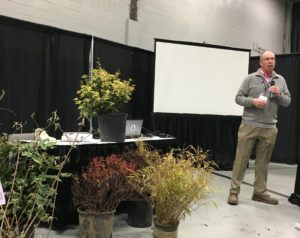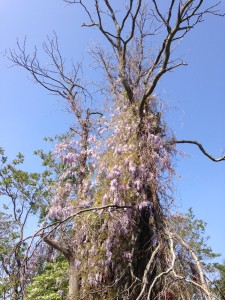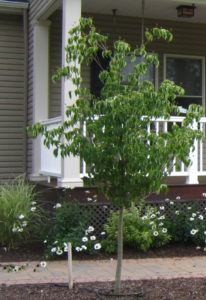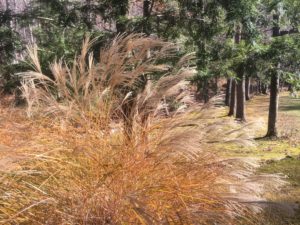Hello fellow readers,
Thank you for your kind wishes for a return to health. I am grateful to feel well again…. Please excuse the late posting of the column due to power and internet outages caused by the nor’easter that slammed the northeast on Friday. It’s been quite an adventure!
As promised, a continuum of a recent talk by Bruce Crawford of Rutgers University about “official-looking” Do Not Plant lists that often include plants that aren’t necessarily invasive if planted in the right place. And many lists, such as the one published by the NJ Invasive Species Strike Team (http://www.njisst.org/index.asp), is “not a state law,” stressed Crawford. Still, there are popular plants to be avoided and others on Do Not Plant lists that Bruce feels are unwarranted. For example:
Maple – While Norway maple (Acer platanoides) introduced in the 1700’s was once prized as a street tree, it is now considered invasive. However, “Japanese maples (A. palmatum) are popping up on the list,” noted Bruce. “Yet they are slow growing, easy to remove, and don’t impact understory areas.”
Poison Ivy – Sure, we don’t voluntarily plant poison ivy though a handsome vine. “You can’t say a problem or invasive plant is always from other countries.” Bruce went on to share “one of the biggest pests at Rutgers Garden is Toxicodendron radicans which is native and has an ecological purpose” (providing food for wildlife). Another ambitious weed is pokeweed, Phytolacca Americana, which is also native. Then there’s Mile-A-Minute Weed, Persicaria perfoliate, native to Asia.
English ivy– another handsome vine native to Europe that forms seeds as an adult in trees. However, Hedera helix “as a groundcover doesn’t fruit or seed and therefore invasiveness is not an issue.”
Wisteria – Rather than the ambitious Chinese and Japanese wisterias (Wisteria sinensis and W. floribunda) consider the native wisteria (W. frutescens) instead.
Japanese silver grass – Many newer earlier blooming varieties are considered invasive. However, ‘Gracillimus’, the original Miscanthus sinensis brought over in the 1880’s, flowers in October and therefore “isn’t as invasive,” per Bruce.
Japanese barberry – We dread the Berberis thunbergii taking over forest floors. Bruce notes it’s the green form that’s most invasive. The ‘Crimson Pygmy’ purple dwarf and golden forms “barely produce seeds.” Still, I avoid barberry and prefer planting maroon leaved Weigelia Wine & Roses (W. florida ‘Alexandra’) which is also high in deer resistance.
Kousa dogwood – It’s hard to imagine Cornus kousa is on some Do Not Plant lists. Only once has Bruce seen it self-seed. “It has great bark, fruit, and flowers. It’s a great plant,” touts Bruce. So much so that Rutgers recently introduced ‘Rutpink’ trade named Scarlet Fire – a dark pink almost red flowering beauty sure to be on many Please Do Plant Lists. Garden Dilemmas? Askmarystone@gmail.com







Great info Mary-although I beg to differ with Bruce about the Cornus kousa-It has no wildlife benefits as the “berries” are too large for birds to consume. Much better to plant our native Dogwoods. 😉
Thanks April, I never considered that the large berries would be too large for birds to eat. I adore our native dogwoods, cornus florida. Especially those that thrive along the woodland edge. So many have died or declined due to the widespread infection of dogwood anthracnose though. What are your thoughts on the hybrids Rutgers University has propagated that are a cross between cornus kousa and cornus florida? I wonder if they offer any benefit to our feathered friends or other critters. I feel another column coming on :^). Thanks for sharing, Mary
Interesting discussion, Mary. I am also going to beg to differ with Bruce about a plant — ivy is terribly invasive here in the Pacific NW, even as a groundcover. This brings to mind another thought to add to your “not necessarily invasive”- check to see if a plant is invasive in your area. It might be, but then again, it might not. Sometimes you will hear that something is invasive, only to discover that is only true in certain places.
Thanks, Gillian, You are so right about invasiveness being a regional as well as a very local phenomenon. Just this week I visited a new client in Princeton NJ who moved into a home with English Ivy in over half the yard. It didn’t look to me that the previous owners intended that outcome. Appreciate you writing in, Mary